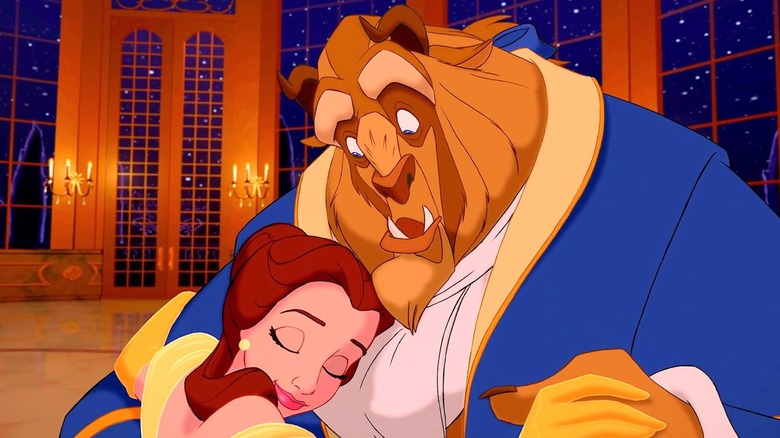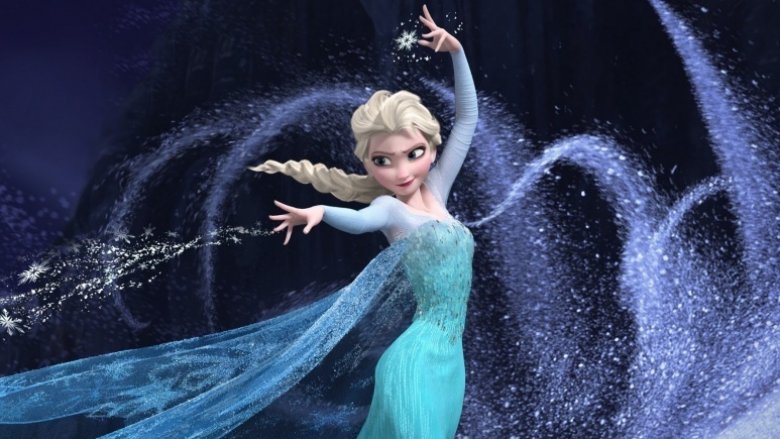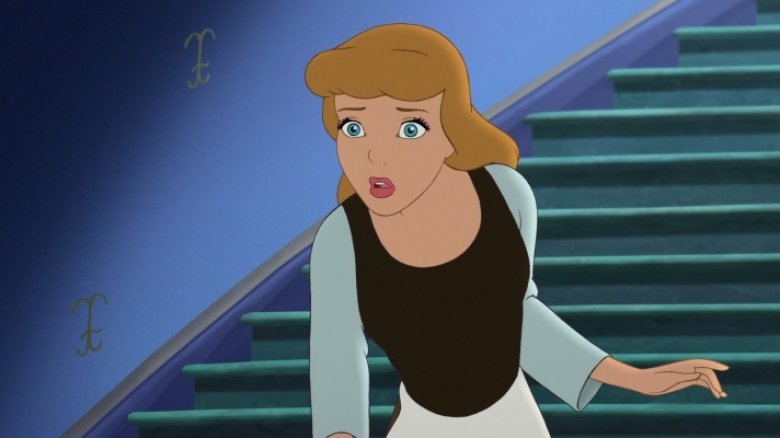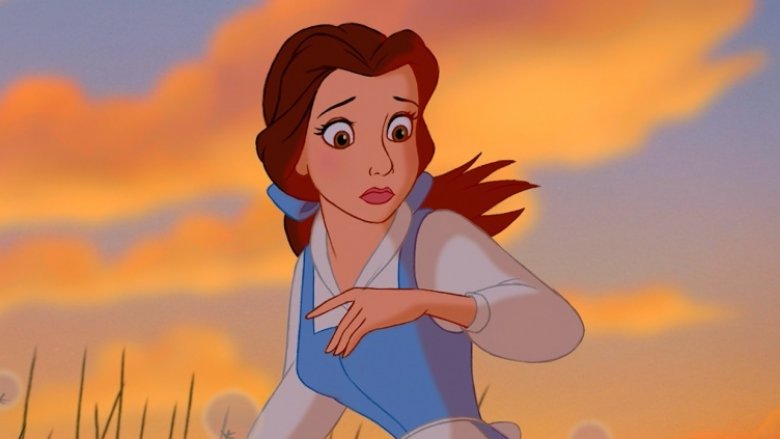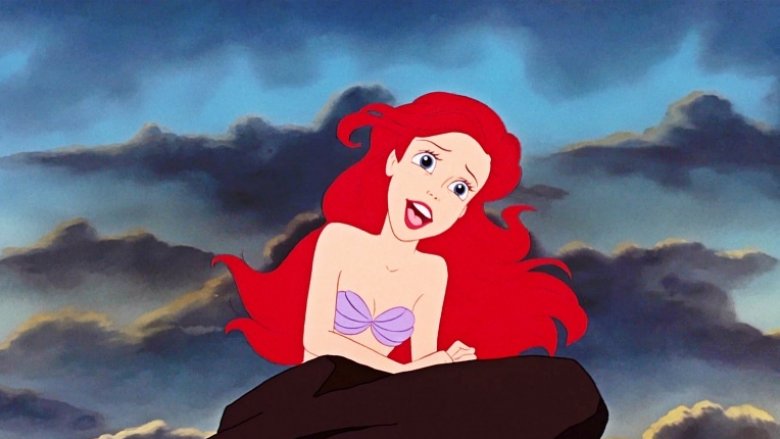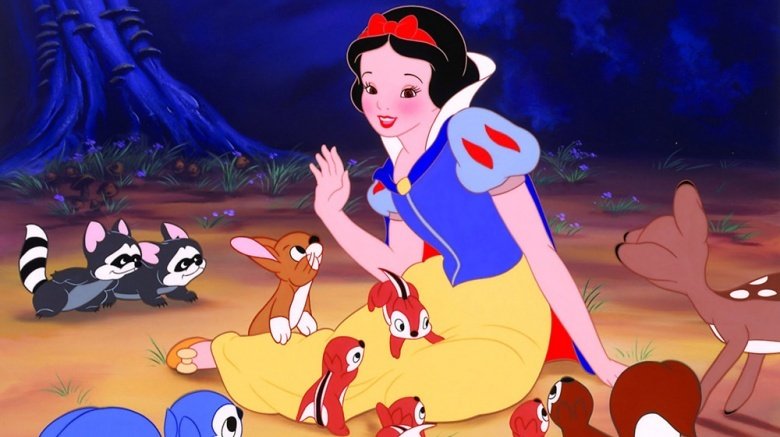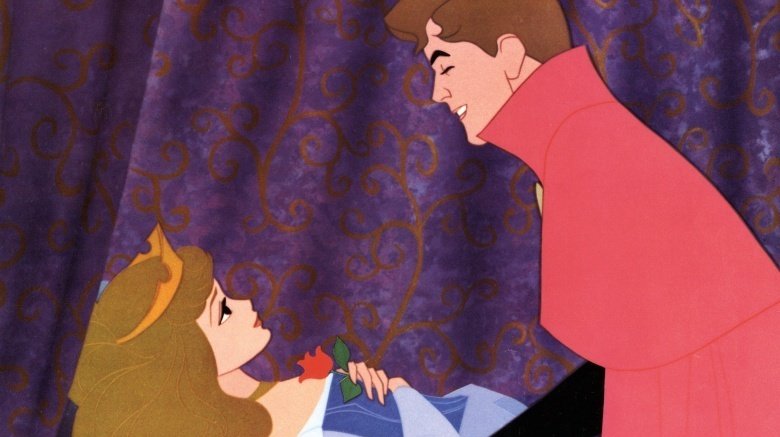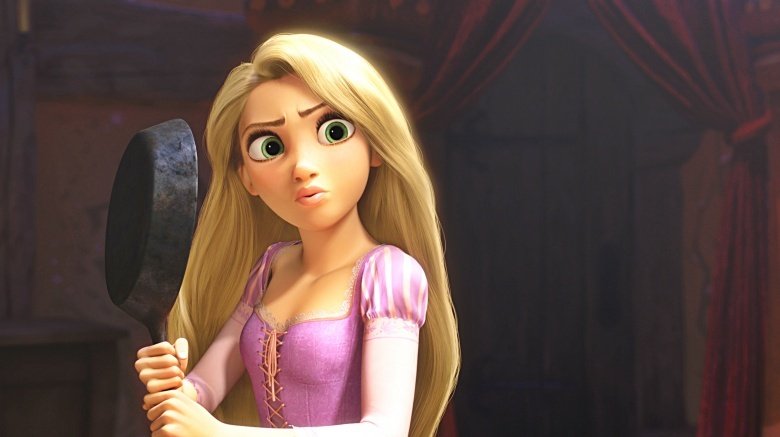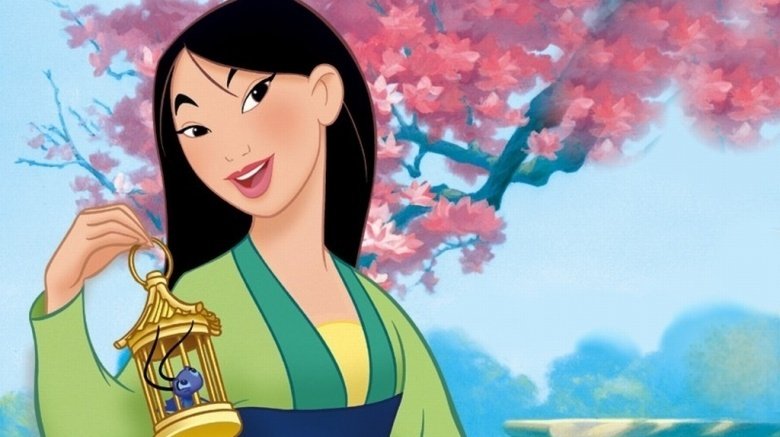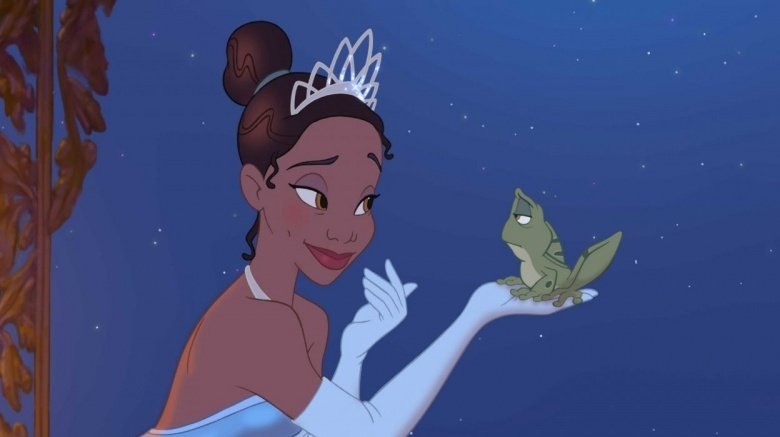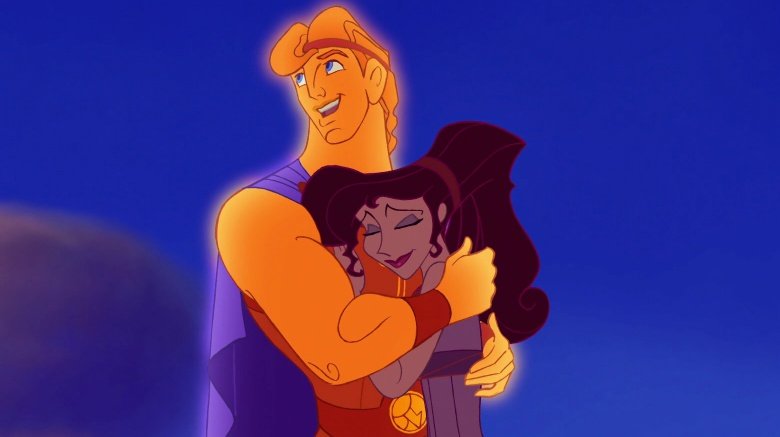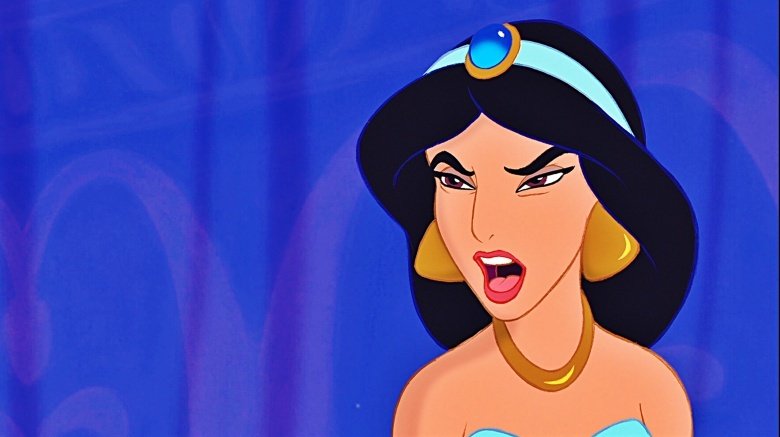The Creepy Stories Behind Disney's Princess Movies
In the world of Hollywood animation, Disney's pantheon of princess movies are the ne plus ultra of lighthearted family fare. With singing animals, big-eyed heroines, guaranteed happily-ever-afters, and a nice, comfortable G-rating across the board, there's nothing even remotely dark or disturbing about these whimsical films ... until you take a peek at the stories they're based on. Here's a roundup of the decidedly R-rated original details that didn't make it into Disney's pretty pictures.
Frozen
From Sven the snarky reindeer, to Olaf the lounge-singing snowman, to its parting message about the power of sisterly love, Frozen broke major ground for Disney as a feel-good, feminist-friendly entry into its canon of classic princess fare. And to accomplish that, all they had to change about the source material was, well, everything.
Frozen is based on Hans Christian Andersen's The Snow Queen, a lengthy, convoluted meditation on the nature of evil in the guise of a classic fairy tale. In the original story, the Snow Queen isn't a misunderstood teenager struggling to bear the weight of her epic ice-making powers and the legacy of some seriously lousy parenting. Instead, she's a cold, creepy, inhuman villainess with an unsavory penchant for kissing underage boys. In Andersen's story, the titular queen kidnaps a little boy named Kay, smooches him to give him amnesia, and transports him back to her ice palace in the north, where she makes him do math puzzles all day and all night. By the time Kay's sister finds him several years later, he is a wrung-out shadow of his former self and downright gangrenous with frostbite. Oh, and the Snow Queen doesn't sing so much as one single power ballad, thus cementing her status as an irredeemable monster.
Cinderella
We love Cinderella for its whimsical use of vegetables, its musically gifted vermin, and its fantastic commitment to pushing the envelope when it comes to fashion. But like most of Disney's classic animated fare, this dreamy old-school princess story was a complete nightmare in its original incarnation. For one thing, Cinderella's father is alive and well in the fairytale by the Brothers Grimm. He's not just there to see how badly she's being treated, he's complicit in it. (When the prince shows up at the house, Cinderella's dad refers to his daughter as "deformed" and tells the prince she can't possibly be the girl he's looking for. What the hell, Dad?) For another, Cinderella in her original incarnation isn't so much a hapless servant girl as a powerful sorceress who inexplicably tolerates being treated like slime by her family even though she can conjure magic with her tears.
And Cinderella's stepsisters? They don't just embarrass themselves when they try to pretend they're the owners of Cinderella's missing slipper; they dismember their feet to make the shoe fit. One of the sisters chops off her big toe, and the other removes a piece of her heel. In both cases, the prince only notices that something is wrong when a bunch of rhyme-talking birds point out to him that his bride's shoe is filling up with blood. And that's not all! At the very end of the story, the sisters show up at Cinderella's wedding and walk her down the aisle in a shameless last-minute attempt to curry her favor — at which point the talking birds, who have had just about enough of this social-climbing nonsense, fly down and peck their eyes out.
Beauty and the Beast
Lovely, bookish Belle is one of the most memorable — and intellectual! — heroines in the Disney princess pantheon. But in Jeanne-Marie Leprince de Beaumont's Beauty and the Beast, the original story on which the movie was based, the circumstances under which she comes to stay with the transfigured prince are a lot more questionable. (Worse, there's not a single singing, dancing teapot to offer some much-needed comic relief.)
In the original Beauty and the Beast, Beauty's father gets on the Beast's bad side, and the Beast decides that either the father or one of his daughters must die as a punishment. The father offers himself, but Beauty volunteers instead. But Beast can't bring himself to kill her on account of the butterflies in his stomach. He proposes marriage to her every day for three months before letting her go back to her dad's house for a visit. Beauty then stays with her fam longer than she intended (thanks to the sneaky manipulation of her two jealous sisters), and returns to the castle to find the Beast near death — not at the hands of Gaston (he doesn't even exist in this version), but because the Beast has been intentionally starving himself for every day that Beauty failed to return to the castle. Beauty, having discovered that the Beast is not just hairy and ugly but also willing to resort to this potent "I'll die if you leave me" brand of emotional manipulation, decides then and there to marry him. Obviously.
The Little Mermaid
We all know the story of sweet Ariel, who fell in love with a human man and — after an epic showdown with the greatest evil diva squid under the sea — got a well-deserved happy ending with a princely husband and her very own shapely pair o' legs. But while Disney's Little Mermaid lived happily ever after as part of your world, the Hans Christian Andersen story that the movie was based on is a much, much darker affair — full of dismemberment, murder, existential crises, and exactly zero reggae jams musical numbers composed by a crotchety talking crab.
In the original Little Mermaid, there's no spectral hand made of magic snatching the mermaid's voice from her throat; she has to sacrifice her ability to speak the old-fashioned way, by letting the sea witch cut out her tongue. And once on land, despite living in the prince's palace where she silently, perpetually pines for him, the heroine never even comes close to getting her man. Instead, he friend-zones her and marries somebody else, leaving the poor, mute mermaid with nothing but bad choices. She can either stab the prince to death (on his wedding night, no less!), or she can die herself. Needless to say, she takes the noble option and throws herself into the sea ... at which point it turns out that her act of sacrifice has earned her a place in heaven. What's that? Oh, no, not now. She has to spend 300 years doing good works as an invisible wind spirit first. Even Ursula wouldn't pull a bait-and-switch like that.
Snow White
The very first Disney princess movie hews more closely to its origin story than most, but the 1938 animated fantasy still skirts a lot of the creepiest bits from the original Snow White. For one thing, the queen in the Brothers Grimm fairy tale doesn't just want Snow White's internal organs as evidence that she's really, truly dead; she wants to eat them, in order to become the most beautiful woman in all the land. (Little-known fact: beauty is absorbed into the body via the small intestine.) In the original story, the queen gleefully chows down on a pile of lungs and liver brought to her by her huntsman, thinking she's eating her own stepdaughter's innards.
Snow White also isn't revived in her story of origin by the prince's life-saving kiss; rather, he brings the comatose princess back in her glass coffin so that he can install her in his home like an objet d'art. (As one does.) But the coffin gets jostled during the journey, dislodging the bit of poison apple in her throat, and Snow White wakes up — at which point the prince decides she'd make a better wife than paperweight. Also, the wicked queen's death is a lot less instantaneous and profoundly more disturbing. At Snow White's wedding reception, the evil woman is forced to put on a pair of molten iron shoes and dance in them until she drops dead. She doesn't even get to have cake first.
Sleeping Beauty
The tale of Sleeping Beauty goes way back, at least to the 17th century, and possibly even to the 15th century in a book called Le Roman de Perceforest. Scholars don't agree entirely, but none of these versions are feel-good fairy tales. The 17th-century version starts out much the same as our modern one. There's a baby girl, a christening party, and a prophecy concerning the danger of flax. But once she's pricked her finger and fallen into her coma, Sleeping Beauty doesn't wake up when her kingly true love enters her bedchamber. Instead, her true love, who is supposedly so overcome by her beauty that he can't control himself, goes ahead and has sex with her despite the fact that she's unconscious. And then he just leaves! Nine months later, the Disney princess — still sleeping — gives birth to her rapist's twin babies, who suck out the cursed flax from their mother's body in an attempt to nurse, waking her up. The king returns after a while and brings her back to the palace, where his jealous wife hatches a plot to stew up Sleeping Beauty and her children and feed them all to her unfaithful husband. When the king realizes this, he throws his wife in the cauldron instead. Cover and cook at a rolling boil for 20 minutes or however long it takes to kill a human. Eesh.
Pocahontas
Much as we love the Disney take on this old-school American story, complete with a pre-scandalous Mel Gibson as the voice of love interest John Smith, the true story of Pocahontas is just kind of sad. For one thing, she was all of 11 years old when she saved Smith's life by throwing herself between him and her father, who intended to execute the man — if that story is even true. The two of them never had a romance; instead the teenage Pocahontas married a fellow Powhatan but was taken captive in 1613 as the relationship between her tribe and the English deteriorated. Although her father tried to negotiate and bring her back, Pocahontas quickly converted to Christianity, changed her name to Rebecca, and married an English tobacco farmer named John Rolfe. She ultimately followed Rolfe to England and died there the following year, at age 20, never having seen her father or family (or Grandmother Willow) again.
Tangled
The Disney version of the Grimm brothers' Rapunzel is a super-sweet teen romance with rousing musical numbers, an epic meet-cute involving a weaponized frying pan, and the requisite amount of long blonde hair. But the source material? Not so much.
First and foremost, Rapunzel isn't snatched by the witch in the original Rapunzel; she's handed over by her parents as a trade, because they couldn't stop stealing salad ingredients from the witch's garden. Yes, they gave up their baby for a salad. Rapunzel grows up in isolation with no visitors except for the witch, until a prince tricks her into letting her hair down so that he can climb up and visit her. When the witch finds out that Rapunzel has been entertaining a man, she lops Rapunzel's hair off and tricks the prince into climbing the severed tresses. When he learns Rapunzel isn't there, he throws himself off the tower into some thorn bushes, which gouge his eyes out and render him blind. Rapunzel, meanwhile, is sent off to wander the desert and give birth to the prince's illegitimate twins. (She had been doing that kind of "entertaining.") The story has an uplifting ending — the wandering, sightless prince eventually stumbles into Rapunzel's arms, and her tears magically restore his eyesight — but things get awfully dark before the happily-ever-after.
Mulan
In a rare reversal, Disney's Mulan is actually a far less straightforwardly badass heroine than her traditional predecessor, who has been a mythological figure in Chinese history since the fourth century A.D. Unlike the fumbling, unlikely girl who joins the army in desperation after accidentally setting a matchmaker on fire, the Fa Mulan of Chinese folklore is depicted as an extremely capable soldier — so capable that she doesn't struggle at all to gain the acceptance of the men who are totally fooled by her skills. Later versions of the tale also include Mulan going through the pain and struggle of unbinding her feet for combat.
The Princess and the Frog
Needless to say, there's not a hint of New Orleans flair in the German fairytale that inspired The Princess and the Frog — and 50 percent fewer amphibians, too. In Disney's version, Tiana is a scrappy jazz-age entrepreneur who dreams of opening her own restaurant, and she's not averse to kissing a frog if it means it'll help her achieve her dreams. (Unfortunately, the endeavor backfires and Tiana is transformed into a frog herself, at which point the story pivots sharply to become a swashbuckling bayou adventure involving hoodoo, voodoo, and trumpet-playing alligators.)
Meanwhile, in the Brothers Grimm version, The Frog King, the Princess meets the frog when she loses her ball down a well. He retrieves it for her in exchange for a promise of companionship, but the princess welches on the agreement, takes her ball, and leaves the frog in the forest, assuming he won't be able to follow her. Cue the frog knocking on the castle door during dinner — awkward! — and the king forcing his daughter to make good on her word. The princess struggles valiantly not to vomit while the frog hangs out on the table beside her at dinner eating food off her plate, and she gamely brings him upstairs with her and sticks him in a corner of her bedroom. But the frog demands that she bring him into her bed — which, to be fair, she did promise to do — at which point the Disney princess freaks out and hurls his frog-body against the wall, fully intending to kill him. The frog bounces back up in princely human form and gleefully announces that now they can get married. Nobody, from the princess to the king to the frog-turned-prince whose fiancee just tried to splat him to death, sees anything wrong with this.
Hercules
Lest anyone starts thinking that only princesses get the Disney clean-up treatment on their creepy origin stories, allow us to present Hercules: possibly the most sanitized fairy tale in the entire catalog of Disney movies. The 1997 animated film begins on Mount Olympus, where the Greek gods Zeus and Hera are happily married, doting parents to their bouncing baby boy. But Disney was cleaning up this creep show from the very start. In the world of ancient Greek mythology, Zeus was less a benevolent father than a congenitally horny troublemaker, constantly engaging in rapey trysts with mortal ladies — including Hercules' mother, whom Zeus seduced by disguising himself as her husband. Hercules was born half man, half god — and Hera, Zeus' wife, was so peeved about her husband's catting around that she tried to have baby Hercules killed, dropping a pair of poisonous snakes into his crib.
Needless to say, a jealous wife trying to commit infanticide against the illegitimate child of her rapist husband wouldn't have fit in a G-rated kiddie movie. Instead of telling the true story of Hercules' origins, Disney invented an alternate universe in which Hades, the god of the Underworld, tried to do away with baby Hercules in order to help along his power grab for Mount Olympus. And Disney completely ignored the part where Megara was given to Hercules by her father as a reward for conquering his enemies — a literal trophy wife — and the part where Hera got her vengeance in the end. After Megara had given birth to three children by Hercules, Hera infected Hercules with madness that cause him to kill his entire family. And Hercules' death at the hands of a jealous lover? Nope, Disney didn't mention that, either! Probably because there was centaur semen involved.
Aladdin
Disney's Aladdin boasts a memorable supporting heroine in Jasmine, the smart, bold, brave, discerning daughter of the Sultan. And there's nothing wrong with that! Except, of course, that an authentic retelling of the original story of Aladdin and the Lamp from Arabian Nights would have looked very different in the Disney princess department. OG Jasmine is not only far more passive and less badass than her Disney counterpart, but she's such an idiot that she's basically the repeated instrument of Aladdin's downfall. First, she hands Aladdin's magic lamp over to the evil sorcerer because she doesn't know what it is. And while she redeems herself by following Aladdin's simple instructions to seduce and poison the sorcerer so Aladdin can get his lamp back, she then immediately invites the sorcerer's even more evil younger brother — who has disguised himself as an old lady — to come live with them in the castle. Fortunately, the genie knows what's what, and Aladdin lives happily ever after ... or at least as happily as anyone can hope to when their wife is so very, very dumb.
